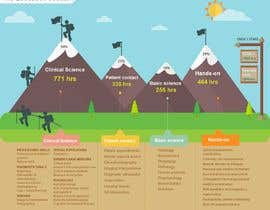A Novice'S Overview To Recognizing Cervical Spine Anatomy And Its Effect On Neck Pain
A Novice'S Overview To Recognizing Cervical Spine Anatomy And Its Effect On Neck Pain
Blog Article
Post Produced By-Proctor Wilkins
As you rest there, possibly feeling a twinge of pain in your neck, have you ever thought the intricate frameworks that compose your cervical spinal column? Recognizing just how the vertebrae, discs, and nerves engage in this region can clarify why neck pain can be so consistent and debilitating. By exploring when should i worry about lower right back pain of cervical back anatomy and its implications for neck pain, you might reveal insights that can aid you better take care of or perhaps avoid those bothersome pains and tightness.
Relevance of Cervical Spinal Column Composition
Recognizing the significance of cervical spine makeup is important in comprehending the complexities of neck discomfort. The cervical back, composed of seven vertebrae, plays a crucial duty in sustaining the head's weight and facilitating movement. It houses the spine, which transmits messages in between the brain et cetera of the body. Additionally, the cervical back secures these fragile nerves and supplies architectural stability to the neck region.
Moreover, the cervical back permits a variety of motion, allowing you to transform your head, tilt it sidewards, and nod up and down. Each vertebra has certain functions and attributes that contribute to the overall flexibility and security of the neck. Comprehending the composition of the cervical back can help you realize exactly how injuries or degenerative problems in this area can cause neck discomfort and related signs and symptoms.
Components of the Cervical Back
When discovering the components of the cervical back, it ends up being evident that its framework contains 7 vertebrae, identified C1 to C7, stacked on top of each other. These vertebrae are important as they offer support to the head and permit a vast array of motion in the neck.
The upper vertebra, C1, likewise called the atlas, supports the head and allows the sluggish movement of the head. Directly underneath how to fix lower back pain is the C2 vertebra, referred to as the axis, which permits the turning of the head from side to side.
Moving down the cervical back, each vertebra plays a crucial duty in keeping the back's adaptability and security. Between each vertebra are intervertebral discs that act as pillows, soaking up shock and avoiding the vertebrae from rubbing versus each other.
Recognizing lower back pain from lifting something heavy of the cervical spine is essential in comprehending exactly how the spine functions and its possible effect on neck pain.
Connection Between Spine and Neck Pain
The link in between the spinal column and neck discomfort is an important facet of understanding musculoskeletal pain. Your spinal column, especially the cervical region, plays a substantial duty in sustaining your head and enabling numerous activities. When there's an issue in the spinal column, such as a herniated disc or misalignment, it can straight affect the surrounding cells and nerves, leading to neck discomfort. Poor stance, injuries, and degenerative conditions can all contribute to spine-related neck discomfort.
It's necessary to acknowledge that the spinal column and neck feature as a natural unit. Any problems or discrepancies in the spine can trigger strain on the neck muscles and ligaments, resulting in discomfort and rigidity.
Verdict
Since you have a basic understanding of cervical back anatomy and its link to neck discomfort, you can much better appreciate the complexities of your own neck pain. Keep in mind, the health of your cervical spine plays a critical role in supporting your head and facilitating movement, so it is essential to look after it via proper position, exercise, and normal examinations with a medical care expert. Remain informed and aggressive about your back wellness to avoid and handle neck pain effectively.
